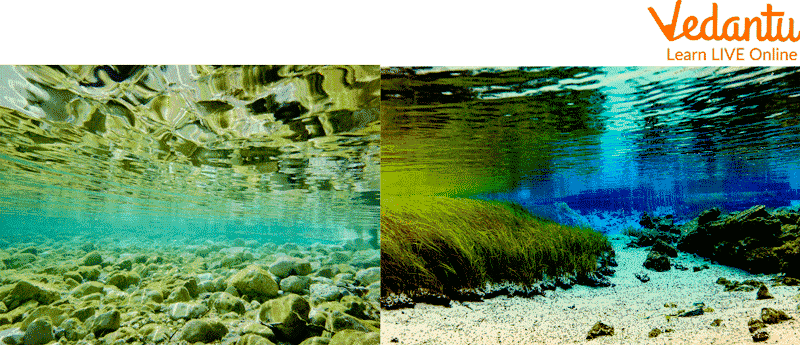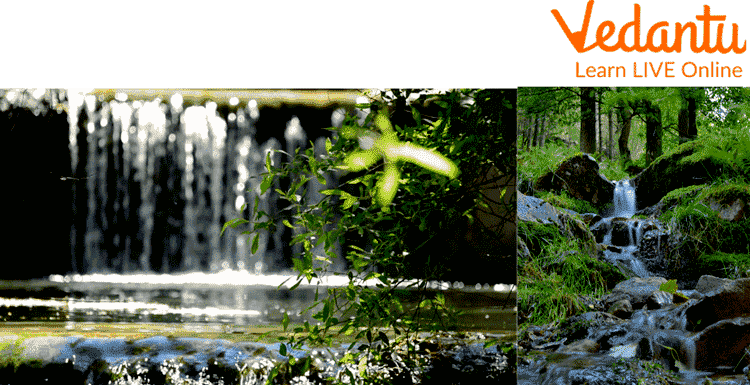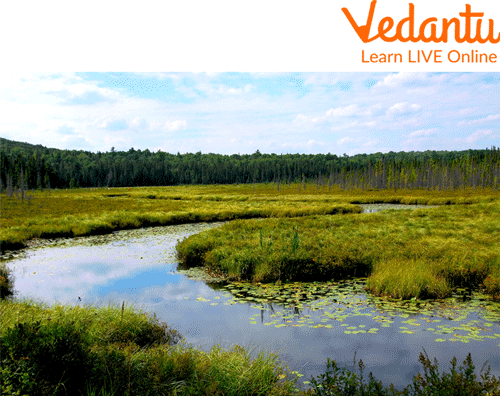




Overview of Freshwater Biome
Have you ever thought about what percentage of the earth's surface is covered with freshwater? Our earth's surface is covered with about 71 percent water, out of which only 3 percent is freshwater. Freshwater is defined as any natural liquid with a minor content of salt and impurities present. It is available in the form of ice, glacier or groundwater. Out of the total 3 per cent available freshwater, only 1.2 percent can be used for drinking purposes. This article covers facts about freshwater biomes and freshwater ecosystems, along with their characteristics and types.
What is a Freshwater Biome?
A broad group of flora and fauna i.e. plants and animals which inhabit water bodies with a salt content typically less than 1% is referred to as a freshwater biome. Lakes, ponds, streams, rivers, and even certain wetlands are some examples of freshwater biomes. These are far different from the marine biome.

Freshwater Biome
Facts About the Freshwater Biome
Some interesting facts about the freshwater biome are given below:
Only 3 % of the available water on the surface of the earth originates from freshwater biomes.
99 % of freshwater is in the form of ice or situated in aquifers.
The freshwater biome is a hub for a variety of animals, out of which mostly are fish, covering about 700 different species.
These serve as the residence for over 1 lakh plants and animals.
It contains approximately 41 % of the total fish in the world.
What is a Freshwater Ecosystem?
A freshwater ecosystem has low levels of salinity, providing a favourable settling for a variety of plants and animals. There occur different sizes of freshwater resources ranging from very small to very large.
Types of Freshwater
There are three types of freshwater ecosystems namely:
Running Water Ecosystem
A running water ecosystem is a collection of flowing water bodies. These include rivers and streams. Running water ecosystems are also called lotic water ecosystems. These environments harbour various species of insects. Some of the commonly found insects include beetles, mayflies, stoneflies and several species of fish including trout, eel, minnow, etc. Examples of running water ecosystem include waterfall, river, ponds etc

Running Water Ecosystems
Standing Water Ecosystem
A standing water ecosystem is a type of aquatic ecosystem which is found in still or stagnant bodies of water, such as lakes and ponds. A standing water ecosystem is also called a lentic or lacustrine water ecosystem. These ecosystems are habited by algae, crabs, shrimps, amphibians, frogs and salamanders.

Standing Water Ecosystem
Wetland Water Ecosystem
The Wetland water ecosystem contain water which is still and is home to several vascular plants. Wetland water ecosystems are highly productive. Many plants live in this type of ecosystem. Some varieties of plants in this ecosystem include marshes and swamps, bogs, and water lilies.

Wetland Ecosystem
Characteristics of Freshwater Ecosystem
Freshwater ecosystem characteristics are given below:
Numerous plant and animal species can be found in the freshwater ecosystem.
A freshwater ecosystem contains a lot of nutrients and minerals.
Freshwater ecosystems are less salinized when compared to other marine ecosystems.
The freshwater habitat experiences a temperature between 30 to 71 degrees Fahrenheit during summers, while in winters, it fluctuates between 35 and 45 degrees Fahrenheit.
Freshwater ecosystems vary in size and shape depending on their location, the area covered, and the depth of the water bodies.
Sediments are present at the bottom of the freshwater ecosystem, which does not move in standing or gently flowing bodies of freshwater.
Summary
In this article, we have covered the freshwater biomes, various facts about freshwater biomes, types of freshwater, and freshwater ecosystem characteristics. It uses images to make learning simple and interesting. This information is useful for the students in safeguarding their future. By reading this, they would have a clear picture in their mind of why they should save water. Hoping this article would be beneficial for you in learning the concepts deeply. Feel free to ask your doubts in the comments.
FAQs on Facts About Freshwater Biome
1. What is the importance of a freshwater ecosystem?
A freshwater ecosystem possesses numerous importance, namely:
Health Benefits: Drinking freshwater can be considered healthy because there are no harmful chemicals or hard ions present in it. Drinking contaminated water can harm an individual's health.
In Agriculture: Growing crops also need freshwater as the harmful components present in water can harm crops. They can also cause pH imbalance of soil and therefore affect plant growth.
It provides a living habitat to a range of organisms in nature.
2. What are the factors varying the temperature of an ecosystem?
The temperature of an ecosystem is affected by the following factors:
Location
Season
Distance from the surface of the water.
3. What are the different ways to solve the issue of water scarcity?
Different ways to solve the problem of water scarcity are:
Rainwater harvesting
Improving water catchment
Implementing new and authentic water conservation policies
Recycling wastewater
Improving irrigation practices
By changing water consumption habits









